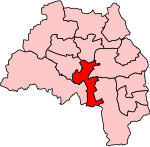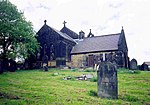Bowes Railway
All pages needing cleanupHeritage railways in Tyne and WearMining museums in EnglandMuseums in Tyne and WearRailway museums in England ... and 3 more
Scheduled monuments in Tyne and WearUse British English from June 2014Wikipedia pages needing cleanup from March 2023

The Bowes Railway, built by George Stephenson in 1826, is the world's only operational preserved standard gauge cable railway system. It was built to transport coal from pits in Durham to boats on the River Tyne. The site is a scheduled monument. The railway is open every week on Thursday, Friday and Saturday (Easter til October) as well as on a number of event days throughout the year.
Excerpt from the Wikipedia article Bowes Railway (License: CC BY-SA 3.0, Authors, Images).Bowes Railway
Springwell Road, Sunderland
Geographical coordinates (GPS) Address Nearby Places Show on map
Geographical coordinates (GPS)
| Latitude | Longitude |
|---|---|
| N 54.9236 ° | E -1.558 ° |
Address
Springwell Road
Springwell Road
NE9 7QJ Sunderland
England, United Kingdom
Open on Google Maps








